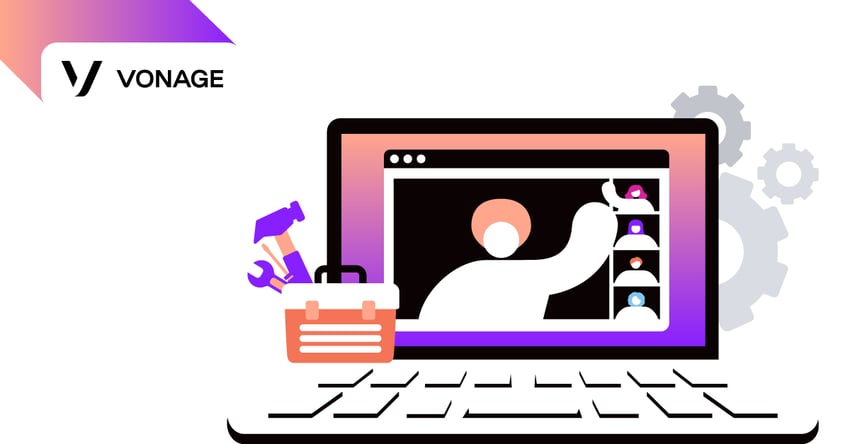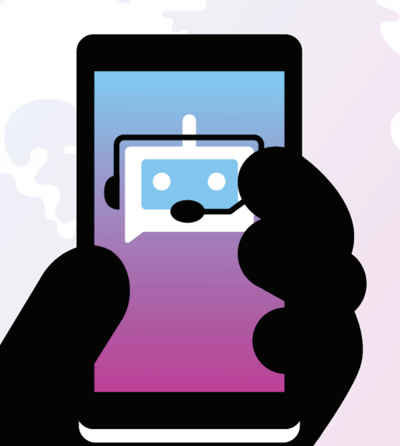Why Video-Conferencing Classrooms Need Purpose-Built Tools
For the education sector, adapting to COVID-19's emergence was especially challenging in the pandemic's early days, when school doors shuttered and decision-makers found themselves grappling with ways to implement reliable video conferencing in education.

The need for a video conferencing classroom was so immense, many (perhaps most) schools turned to off-the-shelf solutions such as Zoom and Google Meet, which offered a fast path back to something resembling normalcy. But ongoing security concerns have prompted many schools to search for alternatives.
Industries such as telehealth and financial services have shown that solid, designed-for-purpose, and — most importantly — secure tools are achievable. Yet education has lagged behind in the development of similar technology, and communication remains one of the field's biggest challenges.
In our 2020 video trends study, we saw a 92 percent increase in video usage among education organizations. To stay on track, the education sector needs solutions dedicated to video conferencing in education and a video conferencing classroom model that does far more for students, educators, parents, and other stakeholders than an off-the-shelf solution.
Advantages of Video Conferencing in Education
The need for education-focused video conferencing classroom tools is at an all-time high. Here are just a few ways these tools can help educators thrive:
Tutoring
Tutoring is a fast fix for many students who fall behind, and that won't change anytime soon. Tools designed to provide a video conferencing classroom can also be used to connect students and tutors in a one-on-one digital environment, a solution that will remain attractive regardless of the status of the pandemic. Who doesn't want to save a drive across town when the task can be handled over video?
Digital Learning
COVID-19 is the spark that made e-learning a necessity, but the evolution of technology was moving the industry in that direction anyway. In countries such as India, the digital distance-learning model has been in place for some time to help combat staffing challenges. In the U.S., we're starting to see increased interest in this model and expect continued growth and innovation from the tools making digital learning possible.
Exam Proctoring
Obviously, distance learning also comes with a need for secure, reliable test-taking from distributed locations. Remote exam proctors make this possible via video conferencing and screen sharing, allowing them to watch their students take the exam and maintain high security standards despite not sharing the room with the test takers.
Distance Special Education
When schools were forced to go remote, there was justified concern for some of the most vulnerable students in special education programs. How can educators be sure they're receiving the support they need? For this population, video conferencing can be a lifesaver in an ocean of confusion. Platforms like PresenceLearning exist to meet this need, connecting special needs students with licensed school-based clinicians who can help fill any gaps in the local school system. As schools begin to catch up, they, too, can use video conferencing through dedicated applications to serve their students from a distance.
 GLOBAL RESEARCH STUDY
GLOBAL RESEARCH STUDY
Benefits of Video Conferencing in Classrooms
Even after pandemic times, the convenience, reach, and positive education outcomes provided by video conferencing tools ensure they'll stick around when kids return to regular classrooms. Already, traditional institutions have begun implementing more video-based instruction tools, with use cases like these becoming more common across the U.S.:
traditional tutoring centers, which utilize the power of video conferencing to connect students and tutors in the online setting to give students all the benefits of classroom and online learning
training organizations, which give professionals a chance to earn certificates via small group, one-on-one, and standard classroom instruction
To get to the point where all schools can enjoy benefits like these, we anticipate a new wave of purpose-built classroom tools in the near future. These applications will offer built-in communications such as voice, video, and messaging in a single, secure, and easy-to-use digital environment. They'll also offer numerous benefits you simply can't get from off-the-shelf counterparts:
Better Compatibility
A video application programming interface (API) can be embedded in native mobile apps for Android and iPhone, or it can enable web-based applications that run inside a browser and require no extra downloads. For example, the Vonage Video API uses native WebRTC within the browser and requires no plugin. Alternatively, the app publisher may choose to build a dedicated mobile or desktop program that requires only the installation of a single app that can do it all.
Access Control
Apps built with a video API are also inherently more secure than general-purpose video conferencing solutions. Since all access is controlled by the app itself, administrators can require app-specific logon and verification, immediately strengthening the digital perimeter. Video is only allowed within the context of the authenticated app, which in turn can completely control how it's used and what capabilities are present per role (for instance, a student's permissions versus those of a teacher). The app publisher may likewise decide to implement a dedicated mobile or desktop program that will, as previously noted, only require the installation of a single app.
Logging and Analytics
Finally, apps built on APIs have the added benefit of internal app-level logging and analytics. This can help manage everything from the user experience to student progress to potential security issues, and beyond. On the other hand, gaining this level of insight from general conferencing tools is almost impossible, pointing to a future where video conferencing classrooms are supported exclusively by purpose-built tools.
Disadvantages of Video Conferencing in Classrooms
Ongoing improvement in video conferencing technology does not mean traditional education will disappear any time soon. Recent experience shows that, as soon as it's deemed safe, parents have and will embrace physical school days again. Permanent distance learning is viable, but is more relevant to higher education institutions with a more mature student body. The social-emotional development that comes from spending physical time with peers is a huge part of the education experience, particularly for K-12. What's more, most working parents face challenges juggling their jobs and responsibilities while overseeing their children's video conferencing learning.
Conclusion
By our estimation, the primary hurdle between education and truly secure, viable virtual classrooms is the lack of built-for-purpose applications. We see this changing rapidly, though, as e-learning platforms develop and expand future-proof solutions to education's video problems.
